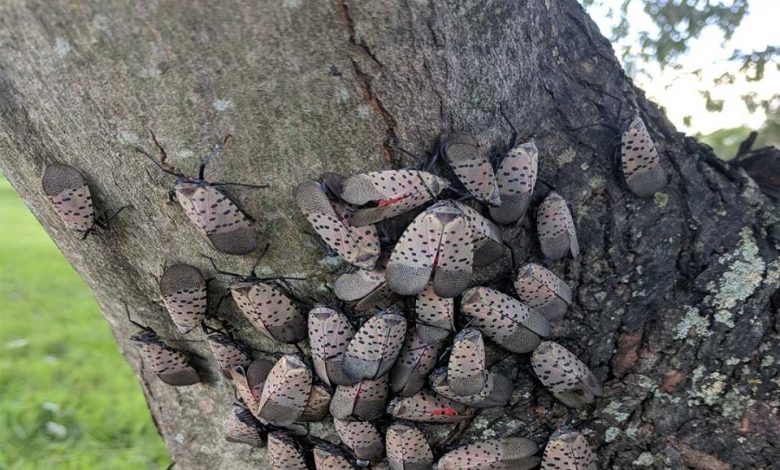
Good to know! Gotta check my backyard immediately!
The spotted lanternfly (Lycorma delicatula) has rapidly emerged as a formidable pest, wreaking havoc on agriculture and natural ecosystems across the United States. Native to China, India, and Vietnam, this invasive planthopper was first detected in Pennsylvania in 2014. Since then, it has spread to numerous states, posing a significant threat to biodiversity and the economy.
A Colorful Culprit with a Destructive Appetite
Characterized by its striking appearance – a gray body adorned with black spots and vibrant red and black hind wings – the adult spotted lanternfly is undeniably captivating. However, its beauty belies its destructive nature. This sap-sucking insect feeds on over 70 plant species, including grapes, apples, and maples, causing severe damage to crops and trees.
Economic and Environmental Devastation
The spotted lanternfly’s impact extends far beyond aesthetic concerns. Its feeding habits weaken plants, making them susceptible to diseases and reducing crop yields. The agricultural industry, particularly vineyards and orchards, faces substantial economic losses due to this invasive pest.
Beyond agriculture, the lanternfly’s destructive tendencies harm native ecosystems. Its feeding on trees can lead to dieback, impacting wildlife habitat and overall forest health. Moreover, the sticky substance excreted by these insects, known as honeydew, creates a breeding ground for sooty mold, further damaging plants and creating unsightly messes on outdoor surfaces.
Taking Action: Controlling the Spotted Lanternfly Population
To protect our environment and economy, it’s crucial to control the spotted lanternfly population. Here’s how you can contribute:
- Monitor and Report: Keep an eye out for signs of the spotted lanternfly, such as egg masses, nymphs, or adults. Report sightings to your local agricultural department.
- Destroy Egg Masses: Scrape off egg masses and place them in alcohol or soapy water to eliminate the eggs.
- Trap Adults: Utilize sticky bands or commercial traps to capture adult lanternflies. Be mindful of non-target species that may become trapped.
- Practice Sanitation: Clean outdoor equipment and vehicles before transporting them to prevent spreading the pest.
- Support Research: Contribute to ongoing research efforts to develop effective control methods.
By working together, we can help mitigate the devastating effects of the spotted lanternfly and protect our valuable ecosystems.




